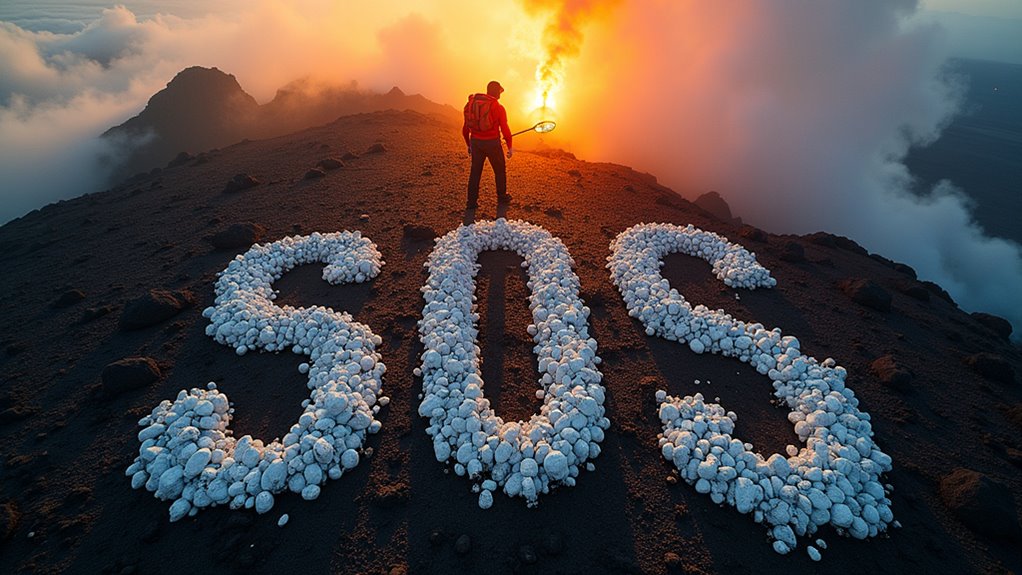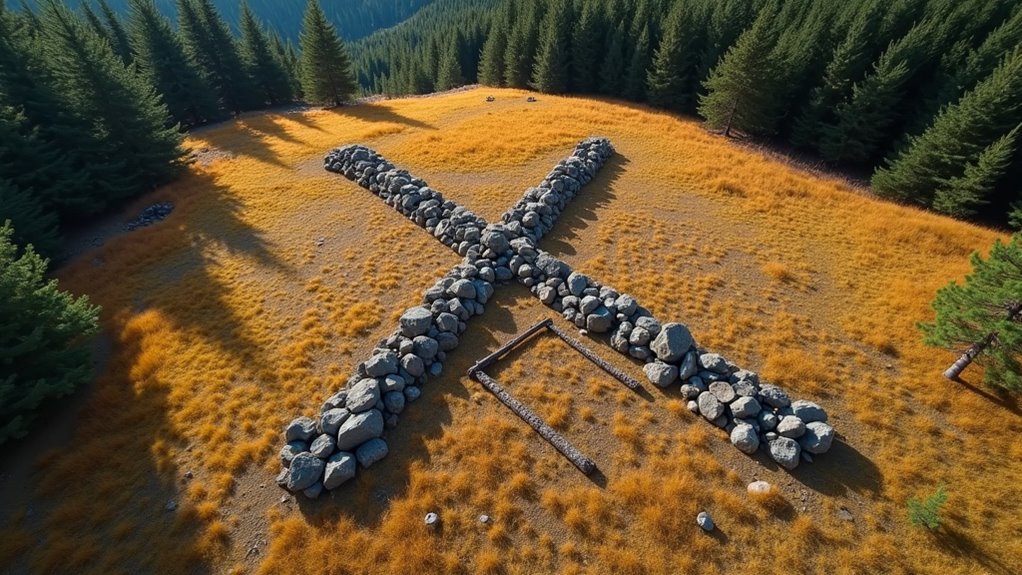Physical Address
304 North Cardinal St.
Dorchester Center, MA 02124
Physical Address
304 North Cardinal St.
Dorchester Center, MA 02124

Critical signaling techniques can mean the difference between rescue and disaster when you're lost in the wilderness.
Every year, search and rescue teams respond to over 52,000 emergency calls in the wilderness, yet many survivors wait days longer than necessary because they don’t know how to signal effectively. When you’re lost or injured in remote terrain, your ability to communicate with potential rescuers becomes your lifeline. The difference between a quick rescue and a prolonged ordeal often comes down to understanding which signaling methods work best in your specific situation and how to execute them properly.

When you’re facing a life-threatening emergency in the wilderness, knowing how to properly send an SOS signal could mean the difference between rescue and tragedy.
The internationally recognized SOS distress signal follows a simple three-three-three pattern: three short signals, three long signals, three short signals.
You can transmit this pattern using various methods – flashing a mirror or flashlight, blowing a whistle, honking a car horn, or creating visual markers with rocks or clothing.
Whether using mirrors, flashlights, whistles, or car horns, multiple signaling methods increase your chances of being spotted by rescuers.
The key is repetition and consistency. Send the SOS pattern three times, pause for one minute, then repeat.
This distinguishes your signal from random noise and clearly communicates distress to potential rescuers.
If you have access to a campfire, you can also create smoke signals by adding green vegetation or damp materials to produce thick, visible smoke that can be seen from great distances. Remember to follow proper campfire safety protocols even in emergency situations to prevent additional hazards.
Since visual signals can travel much farther than sound in most environments, they’re often your best bet for attracting attention from aircraft or distant rescuers. Signal mirrors are incredibly effective—they can be seen up to 20 miles away on clear days. Aim the mirror’s flash directly at aircraft or search teams by holding it close to your eye and aligning the reflection with your target.
Flares provide bright, unmistakable distress signals, especially at night. Use them sparingly and only when you spot potential rescuers nearby. Road flares burn for 15-30 minutes, giving rescuers time to locate you.
Ground markers work when you can’t actively signal. Create large X’s or SOS patterns using rocks, logs, or bright clothing. Make them at least 12 feet long for visibility from aircraft. When establishing a temporary basecamp kitchen, organize your signaling equipment in an easily accessible location so you can deploy visual signals quickly when rescue opportunities arise.

While visual signals excel at long distances, audio signals can cut through obstacles like dense forest or fog that might block sight lines. Your voice is your most basic audio tool, but shouting constantly will exhaust you quickly. Instead, use the universal distress pattern: three short bursts, pause, repeat. This works whether you’re yelling, banging rocks together, or using a whistle.
A whistle is your best audio signaling investment. It’s louder than your voice, doesn’t tire you out, and travels farther. The sharp, piercing sound cuts through ambient noise effectively. Blow three sharp blasts every few minutes rather than continuous noise.
Create rhythmic patterns with any available materials—metal against rock, sticks against trees. Consistent, repeated patterns distinguish your signal from random forest sounds. In jungle environments where dense canopy blocks overhead signals, audio techniques become especially critical since jungle camping often places you in areas where traditional rescue methods may be limited.
Audio signals work well for nearby rescuers, but fire and smoke create visible beacons that can be spotted from miles away. You’ll want to build your signal fire in an open area like a hilltop or clearing where it’s easily visible.
Create thick, dark smoke by adding green vegetation, wet leaves, or rubber to your fire once it’s burning well.
Three fires arranged in a triangle or straight line follow the universal distress pattern.
During daylight, focus on producing maximum smoke. At night, bright flames work better than smoke.
Keep extra fuel ready to quickly boost your signal when you spot aircraft or vehicles.
Always maintain a separate survival fire for warmth and cooking.
If you’re stranded near water, consider that boats have reflective surfaces that can help search teams spot your signal fire from greater distances.

Large ground signals can catch the attention of search aircraft when other methods aren’t practical or available. You’ll want to create symbols that contrast sharply with your surroundings – use dark materials on light surfaces or bright objects on dark terrain.
Make your signals at least 18 feet long for maximum visibility from above. Arrange rocks, logs, clothing, or any available materials into recognizable shapes.
The international ground-to-air symbols include “X” for medical assistance, “F” for food and water, and a straight line pointing toward your intended direction of travel.
If you have reflective materials like mirrors, aluminum foil, or metallic emergency blankets, incorporate them into your display. Position signals in open areas away from trees or shadows, ensuring they’re visible from multiple angles.
While waiting for rescue, consider engaging in recreational activities that can help maintain your mental health and physical condition without feeling like strenuous exercise.
When you’re facing a true emergency, electronic signaling devices can mean the difference between rescue and prolonged danger. Personal Locator Beacons (PLBs) transmit your exact GPS coordinates to search and rescue teams via satellite networks. They’re waterproof, have long battery life, and work globally without cell service.
Emergency Position Indicating Radio Beacons (EPIRBs) serve similar functions for marine emergencies.
Satellite messengers like Garmin inReach allow two-way communication with rescuers and loved ones. You can send custom messages explaining your situation and receive updates on rescue progress.
Always register your beacon with proper authorities and test it regularly. Keep devices easily accessible, not buried in your pack. Whether you’re exploring remote areas of the UK or venturing abroad, understanding how much these devices cost relative to your travel budget helps ensure you’re properly equipped for safety.
Remember, you’re not Robinson Crusoe stranded without options—you’ve got multiple tools in your survival toolkit. Don’t put all your eggs in one basket; combine visual signals with audio cues and electronic devices when possible. Your mirror might catch a pilot’s eye while your whistle alerts ground rescuers. Stack the deck in your favor by using every method available. When it’s life or death, redundancy isn’t overkill—it’s your lifeline home.